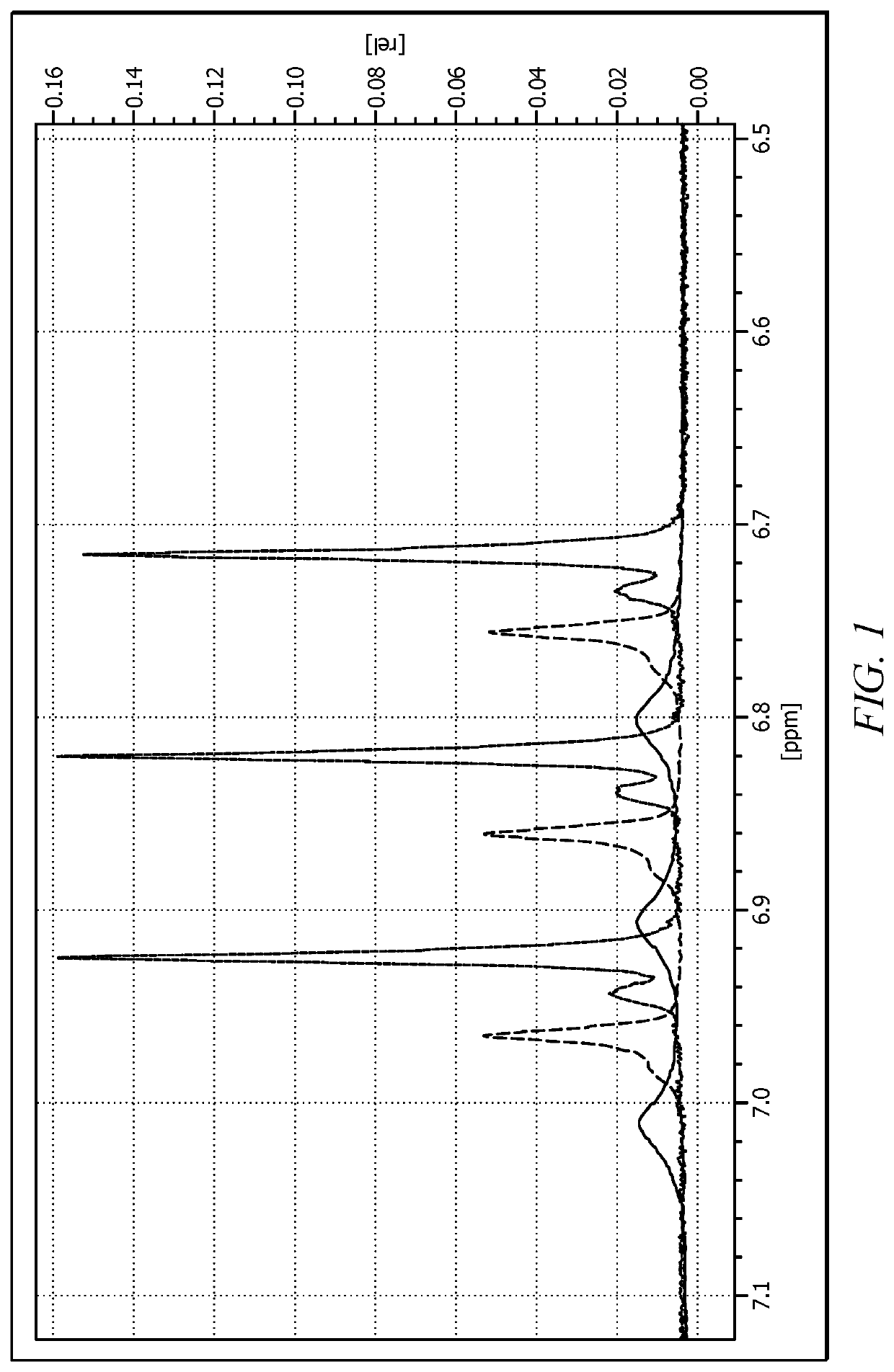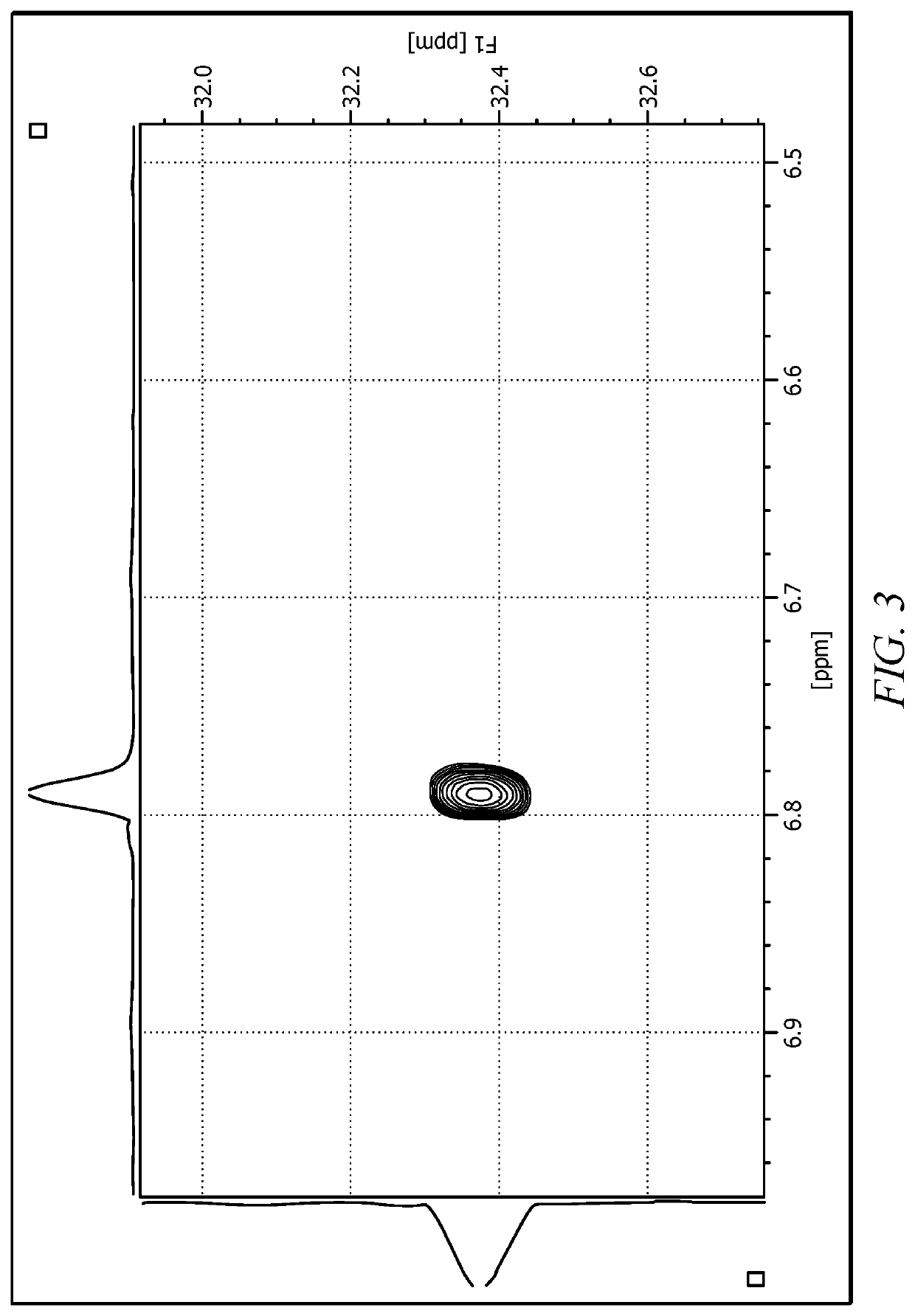Synthetic Cellular Membrane Chemical Ionophore Delivery System Comprising Hexa-Aqua Ligand Compositions
a chemical ionophore and synthetic cellular membrane technology, applied in the direction of biocide, disinfectants, inorganic phosphorous active ingredients, etc., can solve the problems of ineffective administration of antioxidants to address oxidative stress, incomplete understanding of underlying regulatory processes, and cycle cannot function
- Summary
- Abstract
- Description
- Claims
- Application Information
AI Technical Summary
Benefits of technology
Problems solved by technology
Method used
Image
Examples
example 1
A Zinc Hexa-aqua, Copper-Hexa-aqua, Magnesium Hexa-aqua Composition 0.5 Kg Batch: ZCM-5 / 2 / 2
[0116]
Target MetalBatch Mass Ingrediention mass %mass (Kg)PercentageSulfuric Acid0.0170 3.40%Ammonium Sulfate0.0022 0.44%Deionized Water0.230146.03%Zinc Sulfate Heptahydrate5%0.110021.99%Cupric Sulfate Pentahydrate2%0.0393 7.86%Magnesium Sulfate Heptahydrate2%0.101420.28%Total—0.5000100.00%
[0117]In Step 1, Sulfuric acid was placed into a glass or glass lined reactor and stirred at room temperature. Ammonium sulfate was added while stirring and completely dissolved. Deionized water was then added, drop wise, slowly under constant stirring to minimize the exothermic reaction increasing temperature of the solution above 50 degrees Celsius and maintain a temperature of less than or equal to 45 degrees Celsius. The mixture was mixed to homogeneity and allowed to cool back to room temperature (˜25 degrees Celsius).
[0118]In Step 2, the zinc sulfate heptahydrate was combined into the solution prepare...
example 2
Zinc Hexa-Aqua, Copper-Hexa-Aqua, Magnesium Hexa-Aqua and Selenous Acid Composition
ZCMS-5 / 2 / 1 / 1 in a 0.5 Kg Batch
[0122]
Target metalIngredientMassion massmass percentageIngredientpercentage:(Kg)(w / w %)Sulfuric Acid—0.01997 3.99%Ammonium Sulfate—0.00259 0.52%Deionized Water Type 1—0.2704954.10%Zinc Sulfate Heptahydrate5.0%0.1099221.98%Cupric Sulfate Pentahydrate2.0%0.03929 7.86%Magnesium Sulfate Heptahydrate1.0%0.0507010.14%Selenium Dioxide1.0%0.00704 1.41%Total—0.5 100%
[0123]In Step 1, Sulfuric acid was placed into a glass or glass lined reactor and stirred at room temperature. Ammonium sulfate was added while stirring until completely dissolved. Deionized water was then added, drop wise, slowly under constant stirring to minimize the exothermic reaction increasing temperature of the solution above 50 degrees Celsius and maintain a temperature of less than or equal to 45 degrees Celsius. The mixture was mixed to homogeneity and allowed to cool back to room temperature (˜25 degre...
example 3
Zinc Hexa-Aqua, Copper-Hexa-Aqua, Magnesium Hexa-Aqua and Selenous Acid Composition
ZCMS-AHS-5 / 2 / 1 / 1 in a 0.5 Kg Batch
[0128]Following the procedure of Example 1, the ammonium sulfate is substituted with ammonium hydrogen sulfate to compensate for the non-reacted sulfuric acid in the reaction in Example 1. In Step 2 from Example 1, selenium dioxide is added first, in the same method as the other metal salts are added. This formulation is a more efficient one-batch synthesis using the method of Example 1, to produce the preferred composition shown below:
Target metal ionMass mass Ingredient percentageIngredientpercentage:mass (Kg)(w / w %)Sulfuric Acid—0.01739 3.48%Ammonium Hydrogen Sulfate—0.00576 1.15%Deionized Water Type 1—0.2699153.98%Zinc Sulfate Heptahydrate5.0%0.1099221.98%Cupric Sulfate Pentahydrate2.0%0.03929 7.86%Magnesium Sulfate Heptahydrate1.0%0.0507010.14%Selenium Dioxide1.0%0.00704 1.41%Total—0.5000 100%
[0129]Using the procedure of Example 1 and the modifications noted ab...
PUM
| Property | Measurement | Unit |
|---|---|---|
| oxidation reduction potential | aaaaa | aaaaa |
| temperatures | aaaaa | aaaaa |
| temperatures | aaaaa | aaaaa |
Abstract
Description
Claims
Application Information
 Login to View More
Login to View More - R&D
- Intellectual Property
- Life Sciences
- Materials
- Tech Scout
- Unparalleled Data Quality
- Higher Quality Content
- 60% Fewer Hallucinations
Browse by: Latest US Patents, China's latest patents, Technical Efficacy Thesaurus, Application Domain, Technology Topic, Popular Technical Reports.
© 2025 PatSnap. All rights reserved.Legal|Privacy policy|Modern Slavery Act Transparency Statement|Sitemap|About US| Contact US: help@patsnap.com



